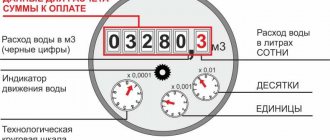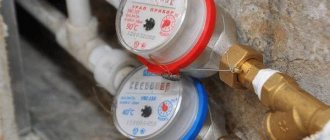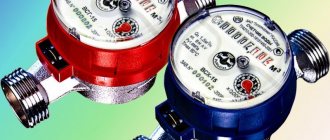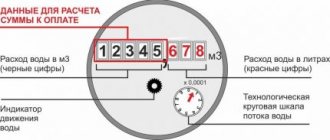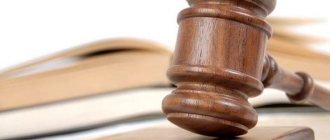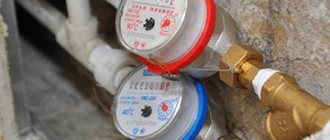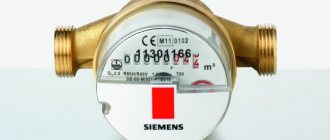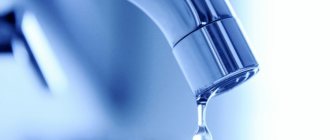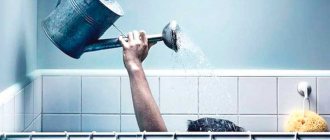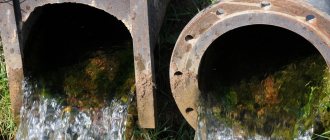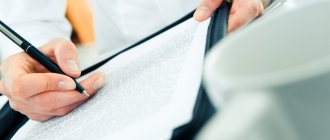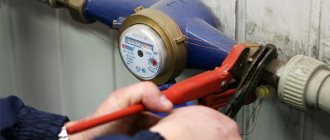Time limits for taking water meter readings
To transfer settlements to the management company, a date is selected from the 15th to the 30th of the month .
The contract with the authorized organization usually states the date of transfer of the testimony. If there are no such recommendations, then the homeowner needs to have time to transfer data from water meters in the second half of the month. Then there will be no discrepancies with accounting - everything is clear and transparent, there are no “floating” balances.
For greatest accuracy, data should be taken every month on the same date . In this case, the consumer sees real consumption on a monthly basis and can accurately plan his payment expenses.
If the homeowner for some reason does not provide evidence, then payment will be calculated based on the average consumption for the last 3 months.
You can correct the data after checking the meters by a management specialist. This check occurs once every 6 months.
The main advantages of installing water supply meters
For those who have not yet decided whether they need meters, check your receipts and the receipts of your neighbors who have meters in their apartment. You will see a huge difference: your neighbors’ amount will be one and a half to two times less than yours.
Experts have calculated what actions an ordinary person does using water every month:
- Presses the toilet flush 118 times.
- Uses the sink - 107 times.
- Takes a shower - 25 times.
- Takes a bath - 4 times.
- Washes dishes - 95 times.
In general, water supply metering devices have advantages:
- You monitor water consumption and can control every cubic meter.
- Using the meter it is easy to save your family budget.
- If you were away from the apartment for a long time, you do not need to pay a fee, and you do not need to account for your absence from home.
- You don't have to pay off your housemates' debts or pay extra for accrued interest.
How to remove data correctly?
Water measuring devices are distinguished by the color of the device body:
- cold water – blue or black meter;
- hot water - meter in a red housing.
Each device can be marked with a marker: “X” and “G”. There will definitely not be any confusion.
On a kind of “display” under the glass of the water meter there is a scale with numbers - each of them in its own window. The numbers come first in black, followed by red .
The resource supplying organization is only interested in “black” numbers. They show how many cubic meters of water were used in a given apartment. Red data is current consumption in liters, it is not taken into account.
Correct reading consists of the following steps:
- Write down the first 5 digits from the counter.
- If there are more than 500 liters on the red part of the scale, add one to the last black number.
- Readings of the red part of the dial that do not reach 500 are simply discarded.
There are meters in which the scale shows the cubic capacity of the water, and the displacement is reflected on additional round dials. There are usually 4 such dials. The leftmost one shows data that is interesting only to a specialist - the technological flow of water. The other three are hundreds, tens and units of liters.
Readings from this type of device are taken in the same way: only 5 digits of the scale are taken . They are also rounded: if you used more than 500 liters, you need to add one to the last number; if you didn’t use them, you should not take into account the displacement.
Types of water meters
There are only two types of water meters; understanding them will not be difficult. They differ from each other in the color of the markings and inscriptions on them:
- Black or blue. The meter is designed to account for cold water.
- Red. The meter is designed to account for hot water.
The use of a red meter for cold water metering is not prohibited, so two identical meters can be located nearby at the same time. In order to take readings correctly and transfer them to the water utility service, you need to determine which meter belongs to cold and which to hot water.
Step-by-step instructions for calculating hot and cold water consumption in an apartment
When installing metering devices, you should inform the management company or the resource supplying organization (depending on with whom the consumption agreement is concluded) about their presence in the apartment. Afterwards you need to report the initial meter readings. These will be the first 5 digits of the black segment of the scale.
Further actions:
- The previous or initial readings are subtracted from the last readings. The resulting figure is the water consumption for a certain period in cubic meters.
- Submit current testimony to the Criminal Code in person, by phone or electronically (by e-mail).
- Multiply the number of cubic meters consumed by the tariff for 1 m3 of cold water. The result will be the amount to be paid, which, ideally, should match the amount in the receipt from the management company.
The calculation formula looks like this : NP – PP = PKV (m3) PKV X tariff = CO, where:
- NP – real indications;
- PP – previous readings;
- PKV – consumed amount of water in cubic meters;
- SO – amount to be paid.
The tariff for cold water consists of two tariffs: for water disposal and water consumption. You can find out each of them on the website of the water supply organization or your management company.
For example: a new cold water meter has been installed in the apartment. The meter scale consists of 8 digits - five on a black background and 3 on a red background. Initial readings during installation: 00002175. Of these, the black numbers are 00002. They should be transferred along with information about installing the meter to the Criminal Code.
A month later, the numbers 00008890 appeared on the counter . Of these:
- 00008 on the black scale;
- 890 – on red.
890 is a displacement exceeding 500 liters, so 1 should be added to the last digit of the black scale. Thus, in the dark sector the number 00009 is obtained. This data is transmitted to the Criminal Code.
Consumption calculation: 9-2=7. This means that over the course of a month, family members “drank and threw away” 7 cubic meters of water. Next, we multiply the quantity by the tariff, we get the amount to be paid.
The rules for hot water are similar to cold water:
- take readings (all numbers up to the red scale) from the meter;
- round the last number to one, discarding or adding liters of the red part of the scale;
- subtract the current readings from previous readings;
- multiply the resulting number by the tariff.
An example of calculation using a type 2 meter with a 5-digit scale and three displacement displays: in the receipt for last month, the latest reading of the hot water water meter is 35 cubic meters. On the day the data was taken, the scale numbers were 37 cubic meters. m.
On the rightmost dial scale the arrow points to number 2. The next display shows number 8. In the last of the measuring windows – number 4.
This means that during the time from the previous to the last reading, 2 cubic meters of hot water were consumed (37 - 35 = 2).
In liters consumed:
- 200 liters, according to the first dial (it shows hundreds);
- 80 liters - according to the second (shows tens);
- 4 liters is the reading of the third scale, which shows units.
In total, during the billing period, hot water consumption amounted to 2 cubic meters. m. and 284 liters. Since 284 liters is less than 0.5 cubic meters of water, this figure should simply be discarded.
When transferring data to Vodokanal or Management Company, indicate the last reading - 37. To find out the amount to be paid, multiply the number by the tariff.
Payment Methods
Today, the population is provided with several main options for paying for consumed electricity:
- Bank branches and self-service devices. You need to transfer money using a payment document or through a special section of the terminal.
- Personal account, payment services, mobile applications. To do this you will need access to the Internet.
- Post offices or payment centers.
- Directly to the utility service provider through branch cash desks.
Regardless of the chosen method, you must receive confirmation of the completed payment.
The cost in the invoice from the management company differs from that calculated independently: how to figure it out?
You need to start by checking the latest and previous readings with the Criminal Code. The calculations on receipts are done by a computer program, but the data is entered into it by a company employee. The human factor has not been canceled - an error can creep in at any stage.
If the readings of the homeowner and the settlement organization coincide, then the following reasons for the discrepancy are possible:
- The tariff for cold and/or hot water has changed.
- When calculating the cost of water, the owner took into account only water consumption, omitting/not noticing the tariff for sewerage.
- A household or apartment is charged more than the required amount of water for general household needs.
It is best to contact the Criminal Code with a statement indicating the latest water meter readings. The statement may contain a request for clarification or, if the owner is confident that he is right, a request for recalculation and return of money.
Recalculation of utility bills
In some situations, it may be necessary to verify the correctness of the enumeration.
Due to incorrect counter information or errors by the receiving employee, excess funds may appear in the account. According to RF PP No. 354, if discrepancies are detected, but provided that the IPU is fully operational and is not classified as out of order, the payment is recalculated.
To return funds, you must:
- Receive from the contractor a copy of the inspection report, which established the presence of surplus due to the difference in readings.
- Write a statement requesting a recalculation of the payment made.
- Submit the documents to a special department of the service company and be sure to receive confirmation that the information has been accepted for consideration.
If everything is done correctly, the due deduction will be indicated on the next receipt. If there is a significant overpayment, the amount is spread over several months.
Advice! If the contractor does not recalculate and does not provide an answer about the decision, you need to contact the regulatory authorities. The cause of failure may be a detected malfunction of the device or damage to control seals, which must be confirmed by an inspection report.
The lack of information about consumed resources recorded by the IPU does not exempt the owner or tenant from paying, since residents are not limited in access to the service and can use water. Based on existing legislation (RF PP No. 354), each owner of a premises that is equipped with a meter has the right to calculate water consumption according to the readings of a correctly installed and commissioned meter. In such a situation, the amount is calculated at a single tariff for a specific region.
How to calculate payment for water using a meter
Paying for water by meter and electricity by meter is convenient because you can calculate in advance how much you will need to pay this month. This is easy to do using the formula:
X = N × Y,
where N is the number of consumed products, and Y is the tariff.
The volume of consumed products must be calculated independently. To do this, take a receipt for payment for the previous month and take readings for the current month. Then subtract today's indicators from those that were last month. The resulting figure is the number of consumed markets. For example, if last month the receipt showed 26 kilowatts, and this month there are already 31 on the meter, during the month you used 5 kilowatts.
Plumbing inspection
Long before reading water meters in the new month, it is recommended to thoroughly check your existing plumbing for water leaks. Timely detection of leaks will help avoid unnecessary costs.
The easiest way to check is to watch the meter. If the water meter wheel is in place, then all equipment is working properly. If water is not used anywhere, and the water meter continues to work, then this may indicate a faulty plumbing.
You have checked all the equipment and found no faults, but the meter readings are still in doubt? In this case, there is a simple way to check the operation of the counter. For the experiment, you only need a 20-liter saucepan. Before starting the test, remember the meter readings, then fill the pan five times. This way you will use exactly 100 liters of water. Now all that remains is to take readings from the meter. If the difference is more or less than 100, then you should contact the appropriate authority to troubleshoot the device.
Thus, so that there is always cold and hot water in the house, and the bills do not shock you, you must remember to transfer the consumption readings to the appropriate authorities every month. You should also regularly check all plumbing fixtures and the water meter for serviceability. As a reminder, it is recommended to keep a calendar to mark the day the readings are taken each month.
Mexico: how to pay for water and electricity using meters
If you have just installed meters for individual consumption of electricity and water, you are probably a little afraid of the complex payment procedure. In fact, everything is simple: we’ll tell you how to pay for water according to meters and pay for electricity.
Look at the counters. They usually have 8 numbers that scroll. In new, newly installed metering devices, the first 6–7 digits are always zeros.
The rollers on the counters have two colors: black and red. Red rollers show how many liters and watts you have spent. Black numbers count cubic meters and kilowatts in water and electricity meters, respectively. To pay, you need black numbers, because tariffs are calculated based on the amount per cubic meter or kilowatt.
When taking readings, do not pay attention to the red numbers. Look only at the black ones. For example, if the water meter shows the number “00006781”, you have spent 6 cubic meters. If you want, you can round the number to 7 cubic meters. It is these indications that need to be reported. The same goes for paying for electricity: report only kilowatts.
Important: if there are several meters installed in the apartment - for water drainage, hot and cold liquids, take readings from all. The receipt will have several lines, and all indications will be needed to calculate the amount to be paid.
Meter readings must be submitted so that they can be used to charge you for utility bills. You can report them to the management company or directly to the EIRC: Unified Information and Accounting Center. To report readings, in both cases you need to provide your exact address or personal account with the supplier. The account number can be found in documents, for example, in a water supply agreement, or in a receipt for payment of utilities. Most often, current accounts are used in small localities; in large cities, a sufficiently precise address is required.
If you transfer data to the management company, you can call the company or register on its website and indicate information in your personal account. You can transfer your readings to the EIRC in several ways:
- call the local branch of the EIRC and provide the dispatcher’s details;
- visit the EIRC in person and leave an entry in the appropriate journal;
- send the indicators by mail - they will take a long time, so it is better to send them in advance.
The most convenient way is to use the website of the Criminal Code or call the EIRC. Data is usually transmitted in the first days of the month in order to have time to pay utilities before the 10th.
The EIRC will transmit the readings to the organization that supplies electricity and to the water utility. They will generate invoices, send them to the homeowners' association or management company, and they will generate a receipt and send it to you. Payment for water and light meters is required - it can be made through any cashier, via the Internet without leaving home, or through special terminals. Later we will tell you in more detail about all the possible ways to pay for utilities.
Heat meter calculation
Calculation of a heat meter involves choosing the standard size of the flow meter. Many people mistakenly believe that the diameter of the flow meter must correspond to the diameter of the pipe on which it is installed.
The diameter of the heat meter flow meter must be selected based on its flow characteristics.
- Qmin — minimum flow rate, m³/h
- Qt — transition flow, m³/h
- Qn — nominal flow rate, m³/h
- Qmax — maximum permissible flow rate, m³/h
0 – Qmin – the error is not standardized – long-term operation is allowed.
Qmin - Qt - error no more than 5% - long-term operation is allowed.
Qt – Qn (Qmin – Qn for flow meters of the second class for which the Qt value is not specified) – error no more than 3% – long-term operation is allowed.
Qn - Qmax - error no more than 3% - work is allowed for no more than 1 hour per day.
It is recommended to select flow meters for heat meters in such a way that the calculated flow rate falls in the range from Qt to Qn, and for flow meters of the second class for which the Qt value is not indicated, in the flow range from Qmin to Qn.
In this case, one should take into account the possibility of reducing the coolant flow through the heat meter, associated with the operation of the control valves, and the possibility of increasing the flow through the heat meter, associated with the instability of the temperature and hydraulic conditions of the heating network. Regulatory documents recommend selecting a heat meter with the closest higher value of the nominal flow rate Qn to the calculated coolant flow. Such an approach to choosing a heat meter practically eliminates the possibility of increasing the coolant flow rate above the calculated value, which quite often has to be done in real heat supply conditions.
The above algorithm displays a list of heat meters that, with the stated accuracy, will be able to take into account a flow rate one and a half times higher than the calculated flow rate and three times less than the calculated flow rate. A heat meter chosen in this way will, if necessary, increase the consumption at the facility by one and a half times and reduce it by three times.
Similar
| Ministry of Education and Science, Youth and Sports of Ukraine National Metallurgical Academy of Ukraine Yu. A. Gichev. Heat supply sources for industrial enterprises. Part I: Lecture notes: Dnepropetrovsk: NmetAU, 2011. – 52 p. | Ministry of Education and Science of Ukraine Ministry of Industrial Policy of Ukraine National Metallurgical Academy of Ukraine - State Institute for Training and Retraining of Industrial Personnel (Gipoprom) Edited by Professor Shestopalov G.move to 0-16320291 |
| Ministry of Education and Science of Ukraine Ministry of Industrial Policy of Ukraine educational and scientific complex "National Metallurgical Academy of Ukraine State Institute for Training and Retraining of Industrial Personnel (Gipoprom)" Edited by Professor Shestopalov G.move to 0-3612123 | Ministry of Education and Science, Youth and Sports of Ukraine National University of Physical Education and Sports of UkraineThe work was carried out at the National University of Physical Education and Sports of Ukraine, Ministry of Education and Science, Youth... |
| Ministry of Education and Science, Youth and Sports of UkraineMinistry of Education and Science, Youth and Sports of Ukraine, Sevastopol National Technical University (Sevntu) from 23 to… | Ministry of Education and Science, YOUTH AND SPORTS OF UKRAINE Ministry of Education and Science, Youth and Sports of the Autonomous Republic of Crimea RVU "Crimean Humanitarian University" (Yalta) Institute of Economics and Management control work in the discipline |
| Ministry of Education and Science of Ukraine Ministry of Industrial Policy of Ukraine National Metallurgical Academy of Ukraine - State Institute for Training and Retraining of Industrial Personnel (Hypoprom) Edited by Professor Shestopalov G. Sociology. Course of lectures // Shestopalov G. G., Amelchenko A. E., Kurevina T. V., Laguta L. N., edited by Prof. G. G. Shestopalov. – Dnepropetrovsk:... | National University of Physical Education and Sports of Ukraine Gridko Lyudmila AnatolievnaThe work was carried out at the National University of Physical Education and Sports of Ukraine, Ministry of Education and Science, Youth... |
| National University of Physical Education and Sports of UkraineThe work was carried out at the National University of Physical Education and Sports of Ukraine, Ministry of Education and Science, Youth... | National University of Physical Education and Sports of UkraineThe work was carried out at the National University of Physical Education and Sports of Ukraine, Ministry of Education and Science, Youth... |
Documents
Documents
Current changes and news
Despite the fact that the annual indexation is only about 4%, for many families consisting of more than three people, costs increase significantly.
And if you take into account that the payment increases not only for water, but also for electricity, gas and heating, the difference in the bill becomes quite significant. Therefore, news about tariff changes is relevant information for payers.
The key change - annual indexation - will occur in the middle of the year across the country. At the same time, the level of tariff growth is determined by the local authorities of each individual region.
So in Moscow, the decision to adopt a new tariff is agreed upon by the capital’s government, the city’s economic policy department and the resource supplier Mosvodokanal JSC.
Payers will see current tariff changes in their receipts. You can find out information about the current tariff and the tariff for the next six months on the website of the resource supply company.
It should be noted that the increase in water supply tariffs that occurred at the beginning of the year did not affect all payers. So among Muscovites, only those who live in “old” Moscow began to pay in a new way. The growth was less than 2%. Residents of new areas that recently became part of the capital have not yet switched to the new tariff.
